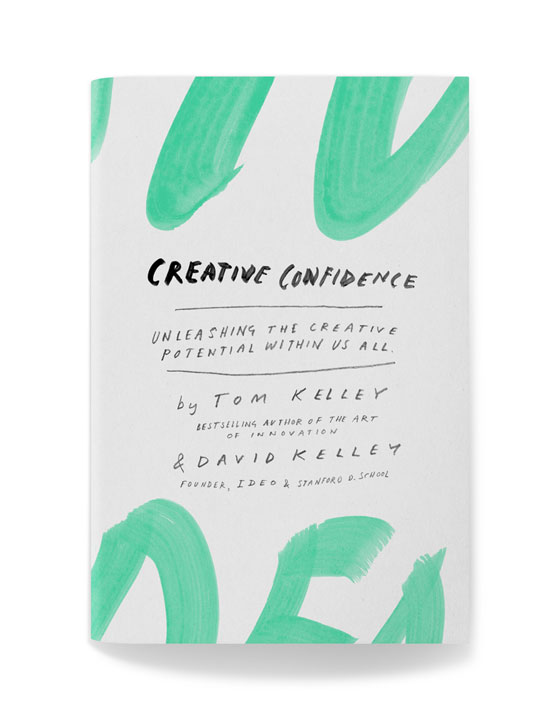Books worth reading
Recent books on the RL book list:
Creative Confidence:
by Tom and David Kelly
Ideas worth exploring:
From Chapter 1, Flip: From Design Thinking to Creative Confidence - Creative Confidence is an "inherently optimistic way of looking at what's possible." Innovation needs balance from the following factors: technical factors (feasibility), business factors (economic viability) and human factors (people). This chapter focuses on Doug Dietz innovative approach to designing MRI machines for children. Design-driven innovation includes inspiration, synthesis, ideation and experimentation, and implementation. It also focuses on how to nurture creative thinkers through a growth mindset and making a difference.
Once you start creating things, you realize that everything has intention behind it.
From Chapter 2, Dare: From Fear to Courage - This chapter begins with Albert Bandura's research on "guided mastery" to "remove false beliefs," reduce fear by helping people "believe that they can change a situation and accomplish what they set out to do" (Bandura calls this "self-efficacy").
One of the scariest snakes in the room is the fear of failure, which manifests itself in such ways as fear of being judged, fear of getting started, fear of the unknown. And while much has been said about fear of failure, it still is the single biggest obstacle people face to creative success.
Creating Innovators:
by Tony Wagner
Ideas worth exploring:
From Chapter 1, A Primer on Innovation - In this chapter, Wagner shares specific examples describing innovation, such as David Kelly (IDEO), John Kao (Innovation Nation, Sir Andrew Likierman (dean of London Business School), Rick Miller (president of Olin College of Engineering), Ellen Bowman (Proctor and Gamble), Brad Anderson (former CEO, Best Buy), Joe Caruso, Annmarie Neal (Cisco) , Keith Miller (3M), Ellen Kumata (Cambria Consulting), Paul Bottino (Harvard), Leslie Anderson (General Dynamics), Teresa Amabile (Harvard). He describes various kinds of innovation: incremental & disruptive (Neal), the skills students need from Wagner's previous book The Global Achievement Gap, including (from page 12)
- 1. Critical thinking and problem solving
- 2. Collaboration across networks and leading by influence
- 3. Agility and adaptability
- 4. Initiative and entrepreneurship
- 5. Accessing and analyzing information
- 6. Effective oral and written communication
- 7. Curiosity and imagination
as well as other qualities: perseverance, willingness to experiment, take calculated risks, and tolerate failure, the capacity for "design thinking," and critical thinking. He other qualities of "design thinkers" that Tom Brown shares: empathy, integrative thinking, optimism, experimentalism, collaboration. Jeffrey H. Dyer, Hal B. Green and Clayton M. Christensen's research identified skills that separate innovators from non-innovators: doing (questioning, observing, experimenting and networking) and thinking (associating). Wagner organizes these qualities into areas that he sees as most essential for successful innovation:
- curiosity, which is a habit of asking good questions and a desire to understand more deeply
- collaboration, which begins with listening to and learning from others who have perspectives and expertise that are very different from your own
- associative or integrative thinking
- a bias toward action and experimentation
Wagner uses several examples to discuss how young people are motivated towards innovation and how we can help them to develop qualities towards innovation. He describes Amabile's framework towards innovation for creativity as the interrelationship among expertise, creative-thinking skills and motivation (especially intrinsic) with motivation being most important of the three. Wagner concludes this chapter highlighting the importance of play, passion and purpose.
From Chapter 2, Portrait of the Innovator as a Young Man -
One of the scariest snakes in the room is the fear of failure, which manifests itself in such ways as fear of being judged, fear of getting started, fear of the unknown. And while much has been said about fear of failure, it still is the single biggest obstacle people face to creative success.
Research and Book Lists
What researchers and educators are sharing about best practices and current ideas for learning.
Reflections and Featured Topics
Current topics and reflective analysis of
About RL and How You Can Get Involved
Why Reflective Learner and ways that you can participate

